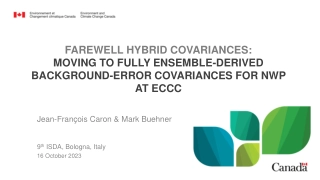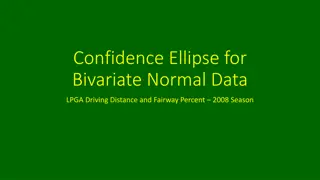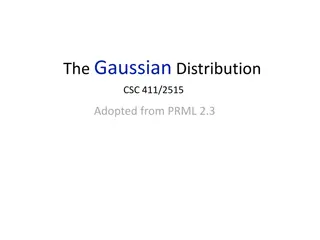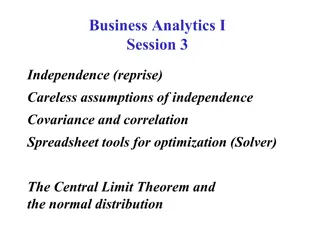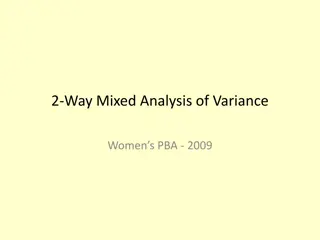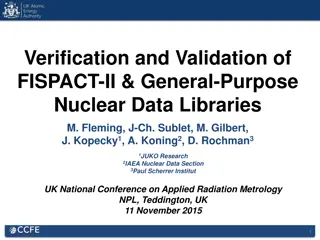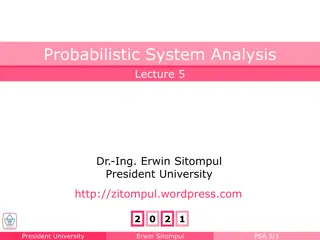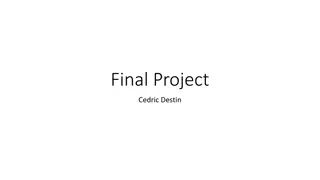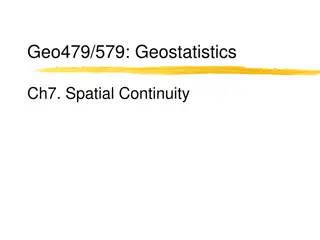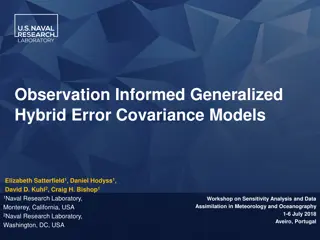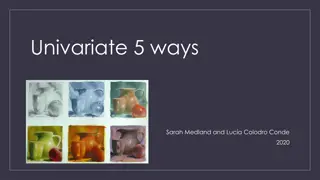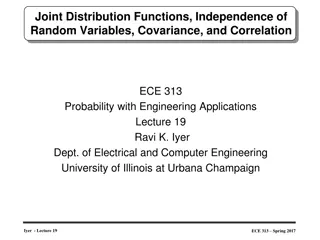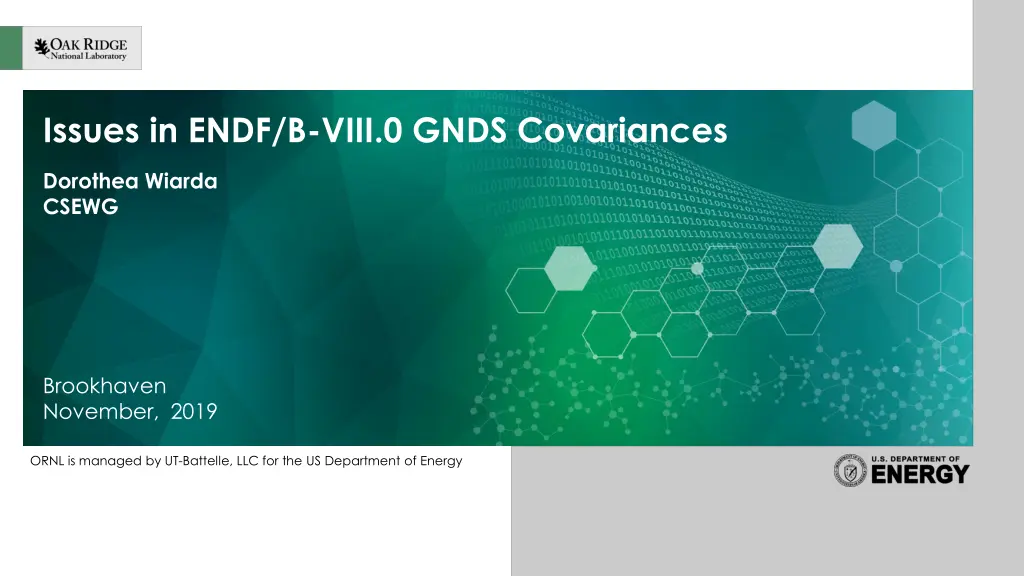
Insights into ENDF/B-VIII.0 Covariance Data and GNDS Capabilities
Discover the issues and testing of ENDG/B-VIII.0 GNDS covariances, along with results of comparison and GNDS features for saving data in different files and styles. Explore the advancements in handling covariance data for nuclear applications.
Download Presentation

Please find below an Image/Link to download the presentation.
The content on the website is provided AS IS for your information and personal use only. It may not be sold, licensed, or shared on other websites without obtaining consent from the author. If you encounter any issues during the download, it is possible that the publisher has removed the file from their server.
You are allowed to download the files provided on this website for personal or commercial use, subject to the condition that they are used lawfully. All files are the property of their respective owners.
The content on the website is provided AS IS for your information and personal use only. It may not be sold, licensed, or shared on other websites without obtaining consent from the author.
E N D
Presentation Transcript
Issues in ENDF/B-VIII.0 GNDS Covariances Dorothea Wiarda CSEWG Brookhaven November, 2019 ORNL is managed by UT-Battelle, LLC for the US Department of Energy
Testing of the ENDF/B-VIII GNDS covariance data Generate a custom template for EXSITE that allows the user to generate input files for all covariance data Puff_iv Puff_iv (ENDF formatted file) (GNDS formatted file) Puff_iv can generate Cross section covariance data from pointwise data (File 31/33) Cross section covariance data from resonance parameter (File 32) Covcomp Compare covariance data Covariance data for CHI (File 35) Each can be selected separately Covcomp shows differences and missing covariance data 2
Results of comparison Some links to cross covariance cross section matrices are broken LB=2 (Fractional components correlated over all energy intervals) matrix not converted correctly For compact matrices correlation are not correctly translated to GNDS values. Covariances in the URR do not contain data for level densities. All of them are fixed in FUDGE but not yet available in downloadable ENDF/B-VIII.0 version from NNDC 3
GNDS allows to save data in different files <externalFiles> <externalFile label="reactions" path="n-092_U_235.xml"/> <externalFile label="Au197" path="n-079_Au_197.xml"/> <externalFile label="Pu239" path="n-094_Pu_239.xml"/> <externalFile label="Pu241" path="n-094_Pu_241.xml"/> <externalFiles> This allows us to split information, i.e. if only processing cross section data, the covariance data file does not need to be read. This also allows us to give big covariance matrices (235U) in a different file that only needs to be read if processing the parameter covariance data. 4
GNDS allows to save different flavors GNDS files can have different styles: <styles> <evaluatedlabel="originalEval" date="2017-11-01" library="ENDF/B" version="8.0.1"> <temperature value="0.0" unit="K"/> <projectileEnergyDomain min="1e-05" max="30000000.0" unit="eV"/> </evaluated> <evaluated label="eval" date="2017-11-01" library="ENDF/B" version="8.0.1"> <temperature value="0.0" unit="K"/> <projectileEnergyDomain min="1e-05" max="30000000.0" unit="eV"/> </evaluated> </styles> This allows to save the same physical information in different parameterizations. See example for 235U on next slide. 5
Covariance data for resonance range in two flavors <parameterCovariances> <parameterCovariance label="resolved resonances"> <rowData href="$reactions#/reactionSuite/resonances/resolved/RMatrix[@label='eval']"/> <parameterCovarianceMatrix label="originalEval" type="absolute"> <parameters> <parameterLink label="0" href="$reactions#/resonanceParameters/table" nParameters="7245 /> <parameterLink label="1" href="$reactions#/resonanceParameters/table" nParameters="8730" matrixStartIndex="7245"/></parameters> <array shape="15975,15975" symmetry="lower"> <values>0.1283682 2.32712e-12 ... </parameterCovariances> <section label="n + U235"> <rowData ENDF_MFMT="33,2" href="$reactions#/crossSection/resonancesWithBackground /> <mixed label="eval"> <covarianceMatrix label="0" type="relative"> <gridded2d> <axes> <grid index="2" label="row_energy_bounds" unit="eV" style="boundaries"> <values>1e-5 1e-4 5e-4 7.5e-4 1e-3 1.2e-3 1.5e-3 2e-3 2.5e-3 3e-3 4e-3 5e-3 7 This is done for 235U in GNDS version of the library 6
Parameter covariance format is very flexible <parameterLink href= link to GNDS object" nParameters="8730 matrixStartIndex="7245"/> < parameterLink as many as needed The href label can refer to constant data, an array, or a table object. The only thing that needs to be defined is the order in which to count the data. Currently defined: Table is counted row-major and all elements need to be counted. Constant data The matrixStartIndex label gives the starting parameter into the covariance matrix The nParameters label gives the number of parameters referred to in the reference object. The covariance matrix itself is given in a 2-D array object, defined as a basic data container that allows compression. Note: This allows to not include zeros in the GNDS file, even so all data in a table (even unvaried ones) need to be counted in the covariance matrix. 7
Additional covariance information <parameterLink href= parameters for first isotope matrixStartIndex= 1"/> <parameterLink href= parameters for second isotope matrixStartIndex= 1000"/> <parameterLink href= parameters for third isotope matrixStartIndex= 1500"/> Covariance matrix with cross correlation between isotopes The above scenario is not currently allowed in ENDF formatted files, but GNDS can easily accommodate it and SAMMY can calculate the corresponding covariance data. We plan to investigate adding this information from the SAMMY fit, along with the implementation in AMPX. 8
Covariance matrices for 2-D data (cross sections) <section label="n + Th232 vs sumOfRemainingOutputChannels" crossTerm="true"> <rowData href= link to cross section"/> <columnData href= link to cross section"/> <covarianceMatrix label="eval" type="relative"> <gridded2d> <axes> <grid index="2" label="row_energy_bounds" unit="eV" style="boundaries"> <values>1e5 6e7</values> </grid> <grid index="1" label="column_energy_bounds" unit="eV" style="boundaries"> <values>1.1295e7 5.6607e7 6e7</values> </grid> <axis index="0" label="matrix_elements" unit=""/> </axes> <array shape="29,8"> <values>0 0 6.86739e- 5.73261e5</values> </array> </gridded2d> </covarianceMatrix> </section> 9
Easy extension to multi-dimension Cross section is a function of S(alpha, beta, T) and covariances is given on alpha, beta and T. <section label= S(alpha,beta)"> <rowData href= Link S(alpha,beta) dimension= 1 > <covDimension domainMin= 1 domainMax= 10 dimension 2 /> <covDimension domainMin= 293 domainMax= 293 dimension 3 /> </rowData> <columnData href = Link S(alpha,beta) dimension= 2 > <covDimension domainMin= 2 domainMax= 3 dimension 1 /> <covDimension domainMin= 293 domainMax= 293 dimension 3 /> </columnData> <covarianceMatrix label="eval" type="relative"> . This allows to give covariances on a number of different quantities in ENDF where it currently is difficult to give covariance information. 10
This work was supported by the Nuclear Criticality Safety Program, funded and managed by the National Nuclear Security Administration for the Department of Energy. 11

